Note: Updated 8/31/2012 at 5:15PM Easter Time
This year at Eurobike, Pioneer has finalized and announced details of their upcoming power meter solution, which is due to be out ‘roughly’ in January 2013. The unit has made the rounds on the bike and technology convention circuits for a few years now – though to my knowledge it was never previously attached to a bike, nor showing the final configuration as it was today.
The unit is sold without crank arms, chain rings or spider, and consists of three fundamental components. Two torque measurement devices that affix to the side of a the crank arms, and one pod in the middle which acts as the transmitter hub to the bike head units. The two torque measurement devices have perpendicular strain gauges which can measure torque both in a twisting motion on the crank, as well as vertically across the crank – allowing it to determine the force you exert on the crank as well as the direction that you’re exerting it (force vector).
The below photo was a bit tough since they had it sealed under glass in the separate pieces – making it a bit hard to get a solid photo of:
The two measurement components attach to your crank arms in two pieces. The first component is cemented onto the crank arm. This is the piece that actually measures the forces exerted onto the crank arm. The second component (transmitter pod) then snaps into the first piece – but utilizes zip ties to ensure a secure fit. The zip tie piece doesn’t have anything to do with the force measurement, but rather merely sends the signals onwards.
The Pioneer system will be compatible with only Shimano Durace 7900 and 7950’s.
The system is powered via standard CR2032 coin cell batteries, which will alert you via ANT+ to the head unit when the batteries are low. The batteries last approximately 200 hours within each of the pods. To extract the batteries, you’ll open up the little pod below using the four screws (each pod has a battery).
Interestingly, the unit actually features IPX5 waterproofing, which is a bit better than the usual IPX7 used in most power meter devices. IPX5 dictates that the device must be able to forced/focused stream of water against the device. IPX7 dictates submersion requirements of 1 meter for 30 minutes. In cases of watches, you want submersion requirements. But in cases of power meters, you tend to actually want jetted water requirements given the high speeds at which water can enter the unit. In most cases, IPX submersion based is fine – but the jetted water is good. Note that IPX5 doesn’t mean it has IPX7, and IPX7 doesn’t mean it has IPX7. The results are not cumulative. Confusing, yes.
Cadence on the unit is supplied via magnets that trip a small cadence magnet plate that’s set in between the crank arm and the frame of the bike. You can see it in the below photo (small black plate):
Installation of the unit is going to require a bit more bike and power meter knowledge than your average power meter. So much so that Pioneer notes it will require the bike shop to be trained in the installation of the device. This is due to the requirement to ensure that the position of the sensors is absolutely perfect, otherwise the unit would likely have accuracy issues.
You’ll notice the fairly complex wiring and zip tie arrangement that must occur on the back of the spider, where the primary transmitter pod attaches:
Once the main pods are attached, they’ll need to attach the crank arm pods. They must be placed in exactly the right place and position:
Following which you’ll be required to do a static load test using a 10kg weight. The weight will be supplied to dealers that are trained on how to install the system. The logistics of the training aspect are still being worked out, but will be made available closer to release.
In addition to the obvious static torque calibration procedure noted above, you can also do a simple auto zero procedure – though, the initial static load test must still occur during installation.
The unit is capable of taking measurements of your power output and direction of torque every 30 degrees of rotation, which allows for a bit more analytical capabilities that other power meter are offering.
Interestingly, they confirmed that they’re broadcasting a private ANT data stream in addition to the standard ANT+ power meter metrics to support the added data pieces. These additional metrics are viewable only on their Pioneer “SGX-CA900 Athlete Cyclometer”, which, is their head unit pictured below. By the way, the official name for the Pioneer power meter itself is the “SGY-PM900 Pedaling Monitor Sensor”. But, back to the head unit…
The head unit comes with the power meter. The power meter comes with the head unit. They are not offered separately or independently. Two peas in a pod.
From my poking around with the unit, the power meter has the vast majority of data fields that you’d expect on a power meter head unit. Including the left/right fields, %FTP fields, lap/total averages and more. The unit has a barometric altimeter, a GPS sensor and a temperature gauge. It’s rated for 12 hours of battery life and has a micro-USB port on the bottom for downloading. It features IPX6 waterproofing, which continues to be better than the industry norm IPX7 for most bike computers. Because of the ANT+ compatibility, it also connects to heart rate sensors, speed sensors and cadence sensors.
As you can see above (sorta), the head unit also displays the force vector metrics, which is unique to the platform.
It should be noted that the Pioneer power meter doesn’t need the Pioneer head unit to work, in fact, it’ll work with any ANT+ power meter compatible head unit (i.e. a Garmin Edge 500, etc…). Of course, you’d want to pick a head unit that’s left/right compatible to take advantage of it.
In addition to the head unit, they also offer a cycling training log site (Cycle-Sphere), which allows data management of the files generated from the head unit itself.
You can see some of the more unique metrics displayed – such as left/right torque values over the course of the pedal stroke:
The unit will have some challenges ahead though. In addition to concerns folks are already noting about the zip tie attachment arrangement, the price point is €2,500. However, for US folks the price will first be set in Japanese Yen, and then the Yen to Dollar Exchange rate will be applied. This means it’s a bit tough to tell the price – but they believe it would be lower than the Euro to US Exchange rate, would have pegged it at $3,100US. In either scenario, it makes it the most expensive new power meter on the block – and that doesn’t include any cranks or other drive side componentry. Availability as noted above is targeted at January 2013.
As always, thanks for reading. If you have any questions – I’d be happy to swing by back the Pioneer folks on Friday or reach out to them via e-mail.
—
Update 8/31/2012 5:30PM Eastern: After getting to talk with some native English speaking Pioneer employees today, we were able to clarify a few things and get the updated above. Here’s the quick list:
1) Clarified how it measures force via perpendicular strain gauges
2) Added more information about zip tie components
3) Added information regarding bike shop installation requirement
4) Received information that unit will use 10kg not 20kg weight, it will be supplied to dealers.
Thanks all!
FOUND THIS POST USEFUL? SUPPORT THE SITE!
Hopefully, you found this post useful. The website is really a labor of love, so please consider becoming a DC RAINMAKER Supporter. This gets you an ad-free experience, and access to our (mostly) bi-monthly behind-the-scenes video series of “Shed Talkin’”.
Support DCRainMaker - Shop on Amazon
Otherwise, perhaps consider using the below link if shopping on Amazon. As an Amazon Associate, I earn from qualifying purchases. It doesn’t cost you anything extra, but your purchases help support this website a lot. It could simply be buying toilet paper, or this pizza oven we use and love.

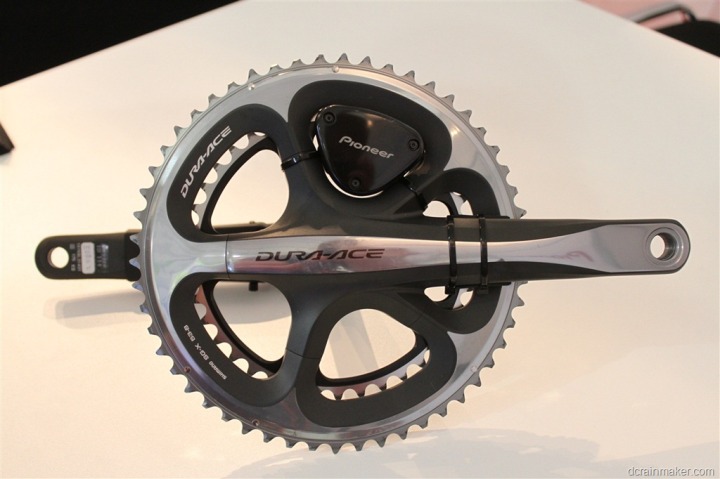
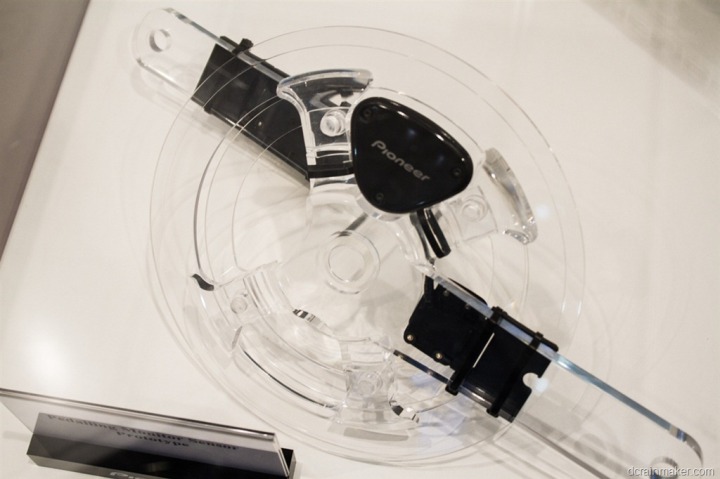
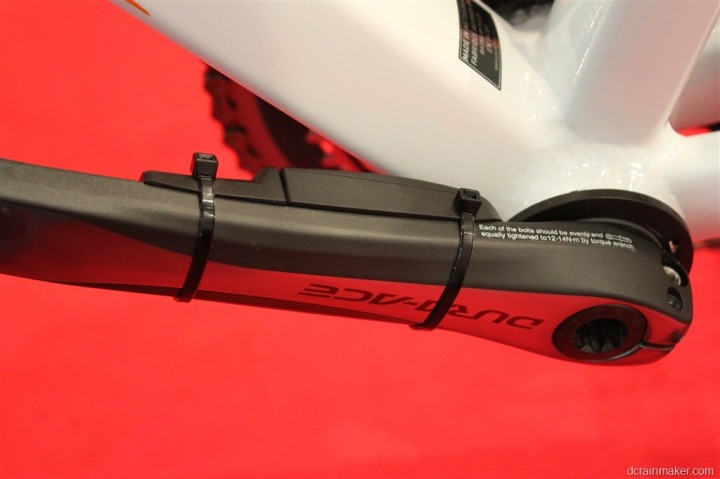
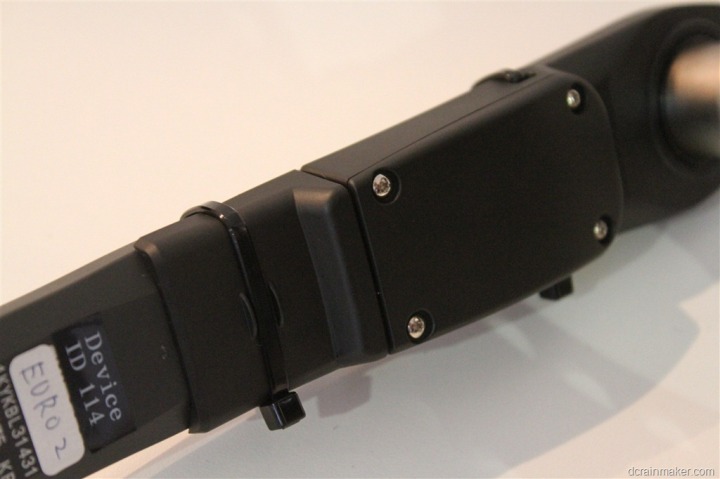
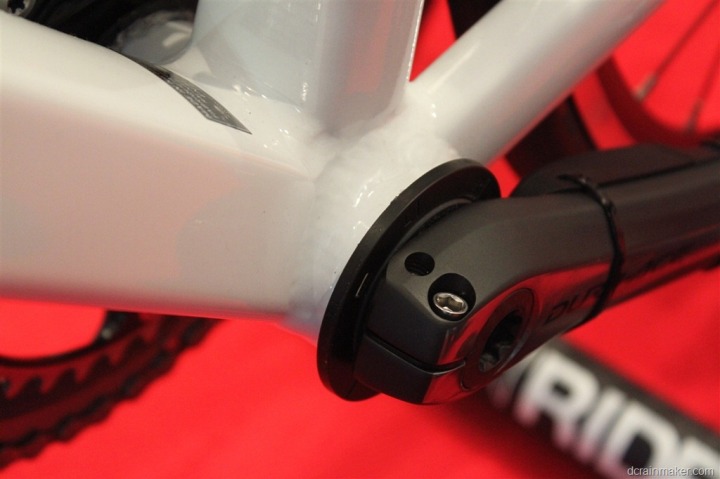
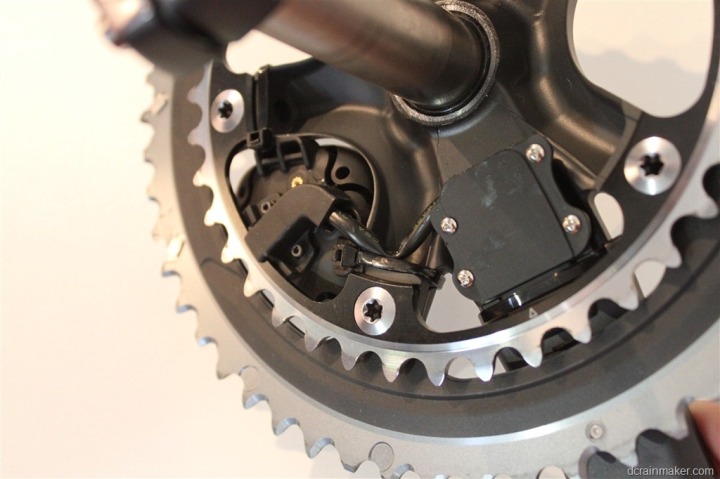

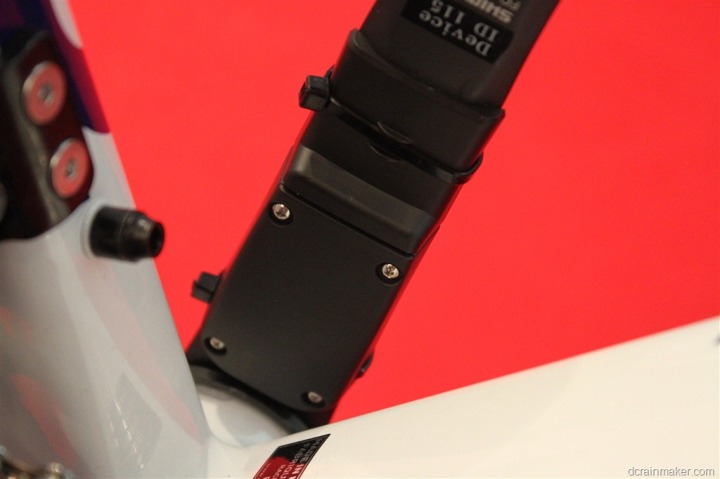
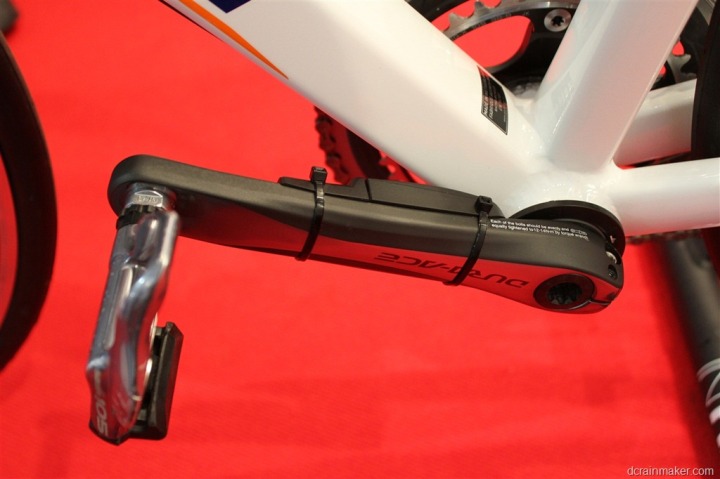
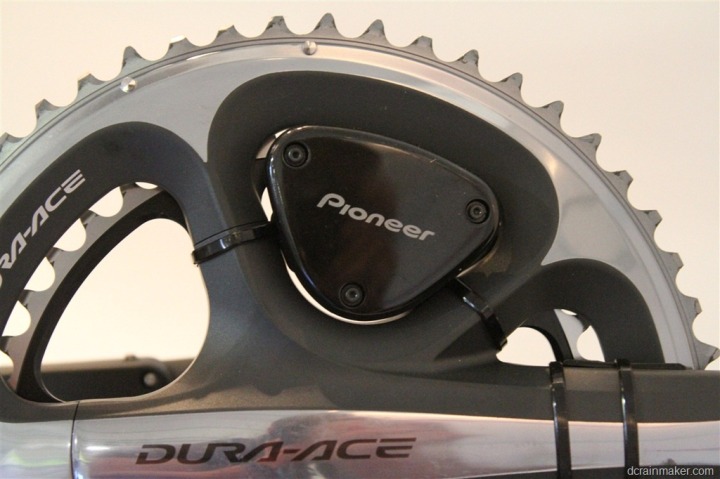
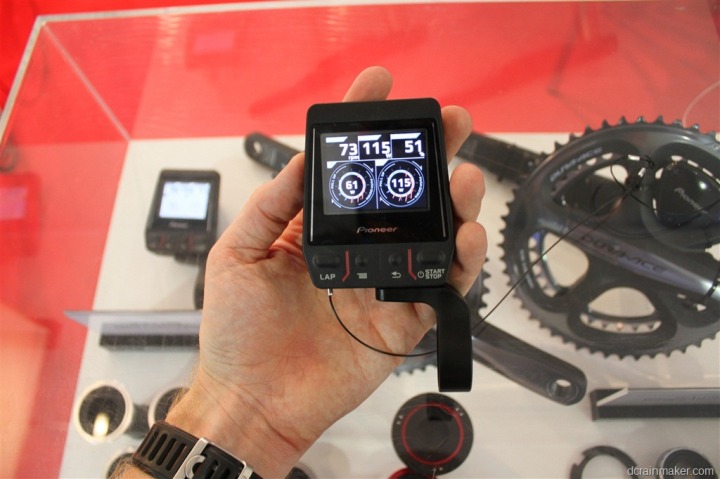
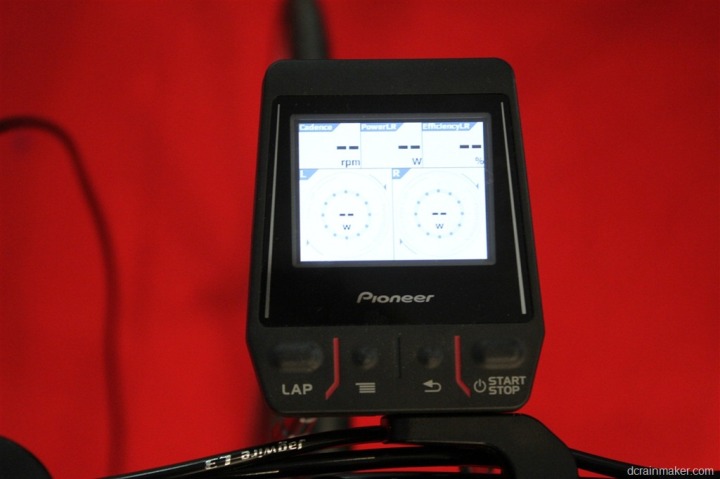
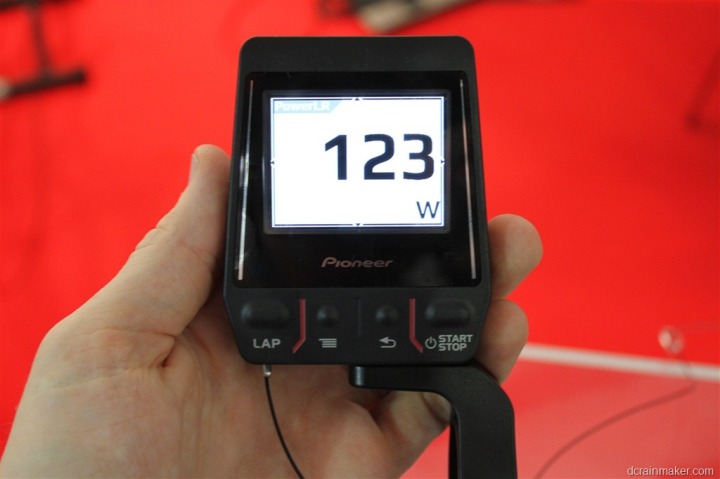
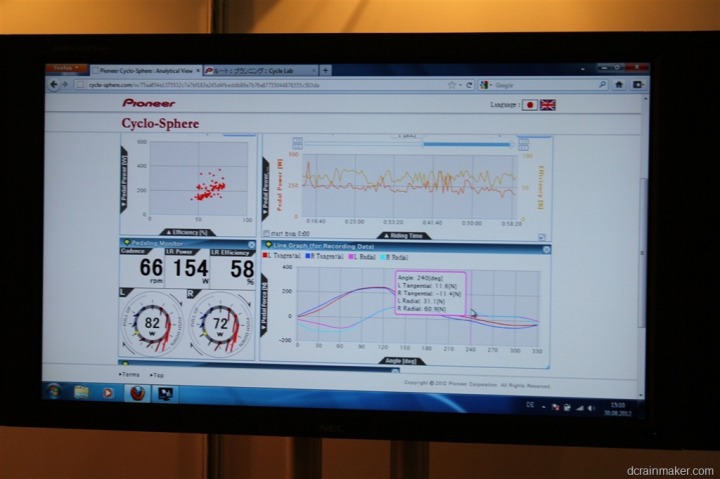
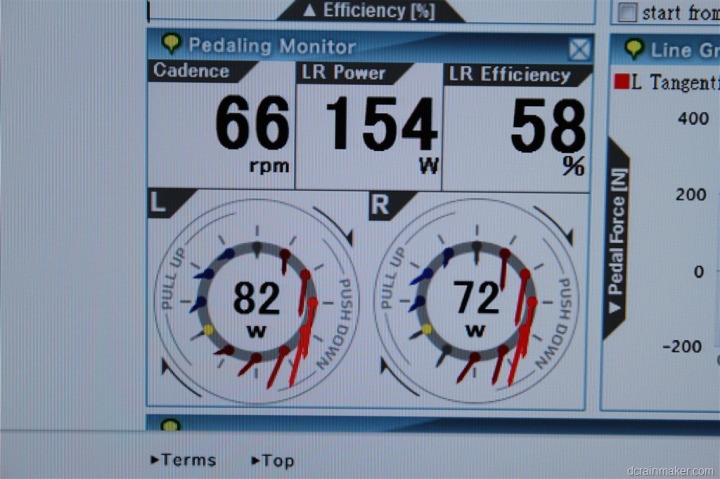
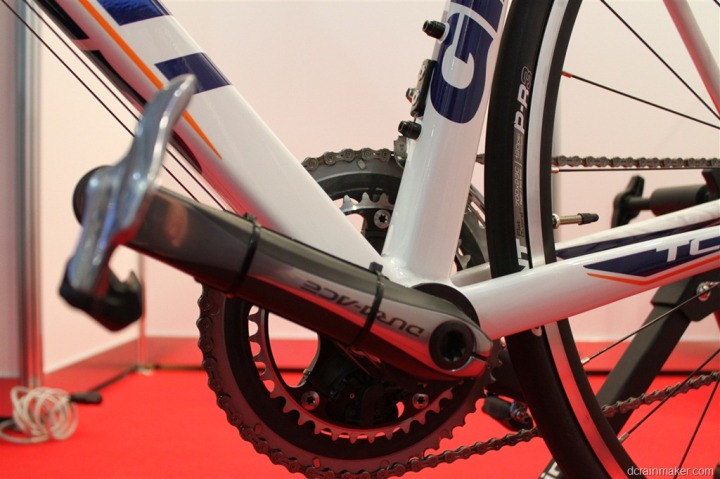

















Zip ties?!?!?! EPIC FAIL!!!
Zip Tie and it currently only attaches to the most expensive crank from a major suppler and is the most expensive power meter. Super duper youtube worthy epic fail. Should go put one on my Aston One-77 bike while I’m at it.
Looks like a calibration nightmare – it’s going to drift all the time with that set up, let alone the need to take it to an LBS to set up in the first place. One of the big attractions of, say, the Garmin Vector (should it ever make it to market) and not e.g. Power2Max is that it is self calibrating. And why the sudden focus on L/R power? We don’t need that sophistication yet; anyone who produces a sub-$1000 dollar, reliable, powermeter is gonna make a killing.
A fundamental question was not answered or even addressed: How does it work? I imagine the pods attached to the crank arms have (VERY accurate) accelerometers which measure the bending of the crank arms under torque.
However, considering that the system has to be calibrated with a standard weight (20 kg), why on earth would the power meter be specific to Dura Ace cranks?
Actually IPX7 is better than IPX6 and X5. The higher number the higher class and protection. IPx7 will do everything that IPX6 does plus also survive immersion. The first digit after IP refers to protection against solid objects like sand or dust. The second digit refers to water protection.
So in this case it’s a expensive, ugly and less protected power meter that only fit one type of crank. Wow. :)
It’s also for a generation of Dura-Ace which is soon to be replaced by the new 9000 series…
freddan: Nopes, you got it wrong, IPX5 and IPX6 offer protection that IPX7 doesn’t, and vice versa.
link to ce-mag.com
Regarding IPX7/IPX8:
“Compliance with either of these tests does not imply compliance with IPX5 or IPX6 unless the product is marked with both ratings (for example, “IPX5/IPX7”).”
This is actually quite clever although the pricing and execution needs much work.
The cementing of the strain gauges to the crank arms is brilliant and means that one is not bound to a specific manufacturer as you don’t need to accurately know the properties of the crank since you control the two component halves of the strain gauge. This is very similar to a method/system I have used to measure strain on helicopter rotor blades (I used to work as a helicopter engineer). The cable ties are for security of the battery cover and protecting your investment in case of cement failure.
Because of the specialist knowledge required to install this correctly I’m not sure this would take off even if the price was greatly reduced, which is a pity because as I’ve said it’s a great idea.
Having waited patiently for Pioneer to come to market with their power meter for some 2 years or so, i’m left disappointed beyond comprehension by this production “effort” of theirs.
shimano only
pricing
cable ties
glue (to an extent – although this could point towards an excellent solution)
& as anon says – an elegant solution for <$1000 is the one that will storm the market!
Anyone whos anyone will know enough that the amount of work and tecnolgy that went into this product will no that it is a decent price. I’ll stand by pionner in saying that this is an amazing product but i also agree with brian with the first comment they do need to think about a better way of mounting the pods and crank arm to the bike. A new product will always have its problems but what I have learned rom pionner over the ears of having most of thier products is that if something is wrong, they fix it and enhance the procut even more.
Your wrong with your IP comments, Freddan is correct.
I work in the electrical industry and if its IP X8 then its the best you can get, that should take submersion and water jets.
IPX5 or X6 will take various blasts but not the submersion element.
So its actually go pretty poor sealing really.
Can you point me to some documentation that states that IPX7 INCLUDES the IPX5 components? I agree that IPX5 doesn’t include submersion, but everything I’ve read states that they aren’t cumulative. Meaning that IPX7 includes submersion, but not anything up to that point. Whereas IP7 would (the X designates non-inclusion of other certifying elements).
Again, happy to be wrong here – just looking for clarifying documentation.
Thanks for dropping by!
You’ve probably seen this: link to en.wikipedia.org (disclaimer included)
It would seem that the numbers are cumulative, 7 is better than a 5, 8 would be even better.
Best rating is IP68, where first number indicates particulate intrusion, second number indicates waterproof level. It’s surprising that the particulate level is blank when the stated waterproof rating is a 5. It would be hard to imagine it not being dust tight (6).
Aparently water tests 5 & 6 are not cumulative through 7 & 8.
link to ce-mag.com
Compliance with either of these tests (IPX7 or IPX8 tests) does not imply compliance with IPX5 or IPX6 unless the product is marked with both ratings (for example, “IPX5/IPX7”).
I do not get the point. Why should anyone buy this device? No advantage over any other device at all!
Have you tested the new design yet and is it as good as the Quarq, powertap, rotor, or SRM?
I actually just picked up the 2nd generation variant on Monday (I’d been testing the 1st gen version seen above). I find that the power meter itself is actually fairly good, but the head unit is a bit overpriced in my opinion.
Does that mean there might be a review in the works for the 2nd Gen version? Curious to hear your thoughts on it as it seems like they’ve managed to make some significant headway with their improvements. Thanks !!
link to slowtwitch.com
Pioneer just announced they have dropped the price of the unit to $999. Any idea if this drop will trickle up to the Ultegra or DA pre-built cranksets?
link to bikerumor.com